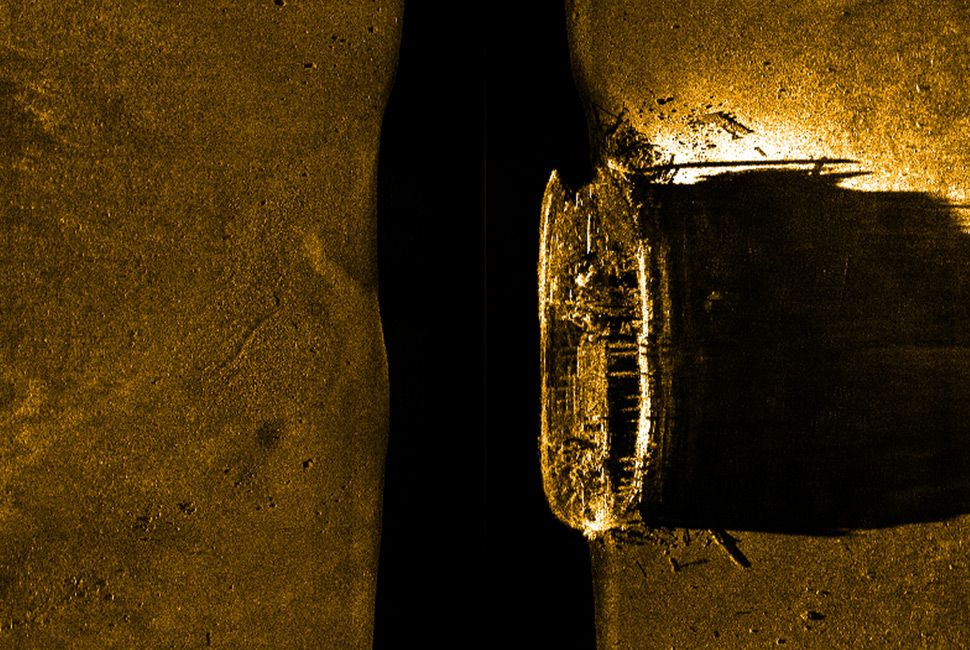Editor’s Note: The HMS Terror, the second ship from the doomed polar expedition described by John Geiger in this interview, was finally located on September 3. The ship was found not far from its sister vessel, the HMS Erebus — in the same bay, in fact. The Terror, which sits roughly 80 feet down, is remarkably well preserved and could hold answers to what happened to John Franklin’s expedition. The discovery was made by the Arctic Research Foundation, who piloted an unmanned ROV through a hole in the ship’s hull to identify the wreck.
In September 2014, Parks Canada, working with partners including the Royal Canadian Geographical Society, located what John Geiger, CEO of the RCGS, calls “the most important polar archaeological discovery that has ever been made.” Said discovery is the relocation of one of Sir John Franklin’s Royal Navy vessels that used to search for the Northwest Passage, the HMS Erebus.
For over 17 decades, the Erebus was missing, lost at sea, holding the secrets to what became of Franklin and his men. There were no survivors from the expedition, and artifacts on Franklin’s ship could shed light on whether the group successfully located the Northwest Passage. We caught up with Geiger at New York’s Explorer’s Club to discuss the discovery, what’s next for exploration and what will happen to the artifacts recovered from Erebus.
Q. How did you first get into exploration?
JG. I’ve never called myself an explorer, but I have been on a number of expeditions. Starting in my twenties I was involved in a series of arctic expeditions. Owen [Beattie] was undertaking research into a lost English expedition that disappeared in the Hudson Bay in 1719 — the James Knight expedition. We were on a place called Marble Island, a very sort of desolate outcrop off of Rankin Inlet to the northwest coast of Hudson Bay. The landscape is very unusual. The island looks like it is made of white quartzite. The coastline around it is all darker earth tones and then there is this island that is white, so in the distance it appears like this ice floe. Marble Island is the place where the James Knight expedition ended in disaster in 1719. Twenty-nine men died, two ships were lost. It is sort of the first great polar mystery, really. The disappearance of Knight’s expedition was also kind of the first polar tragedy. The fact that nobody survived to tell what became of them makes it even more interesting. There are these enduring questions about what happened to them — “why did they all die?” The commanding officer Knight, Captain James Knight, was the governor of the Hudson’s Bay Company. He had lived for years in the arctic, in arctic conditions. He founded Churchill Manitoba — the great polar bear center — he was the one the founded a fort there. So a very interesting guy, he knew what you had to do to survive in polar and sub-polar conditions — and yet they all died, including Knight himself.
So it is a great mystery — it’s not well known but it’s an amazing story. So it caught my attention and that of Owen. I spent three field seasons there battling plagues of mosquitos and the occasional polar bear. The weather which lurches from quite beautiful with the warm temperatures, to cold, plus five Celsius with sleet. So really a remarkable place. I spent three years doing that in the summers. So I have been involved in field science and I have always been very interested in the whole realm of exploration — particularly as it pertains to polar regions.
Q. What happened to the HMS Erebus?

